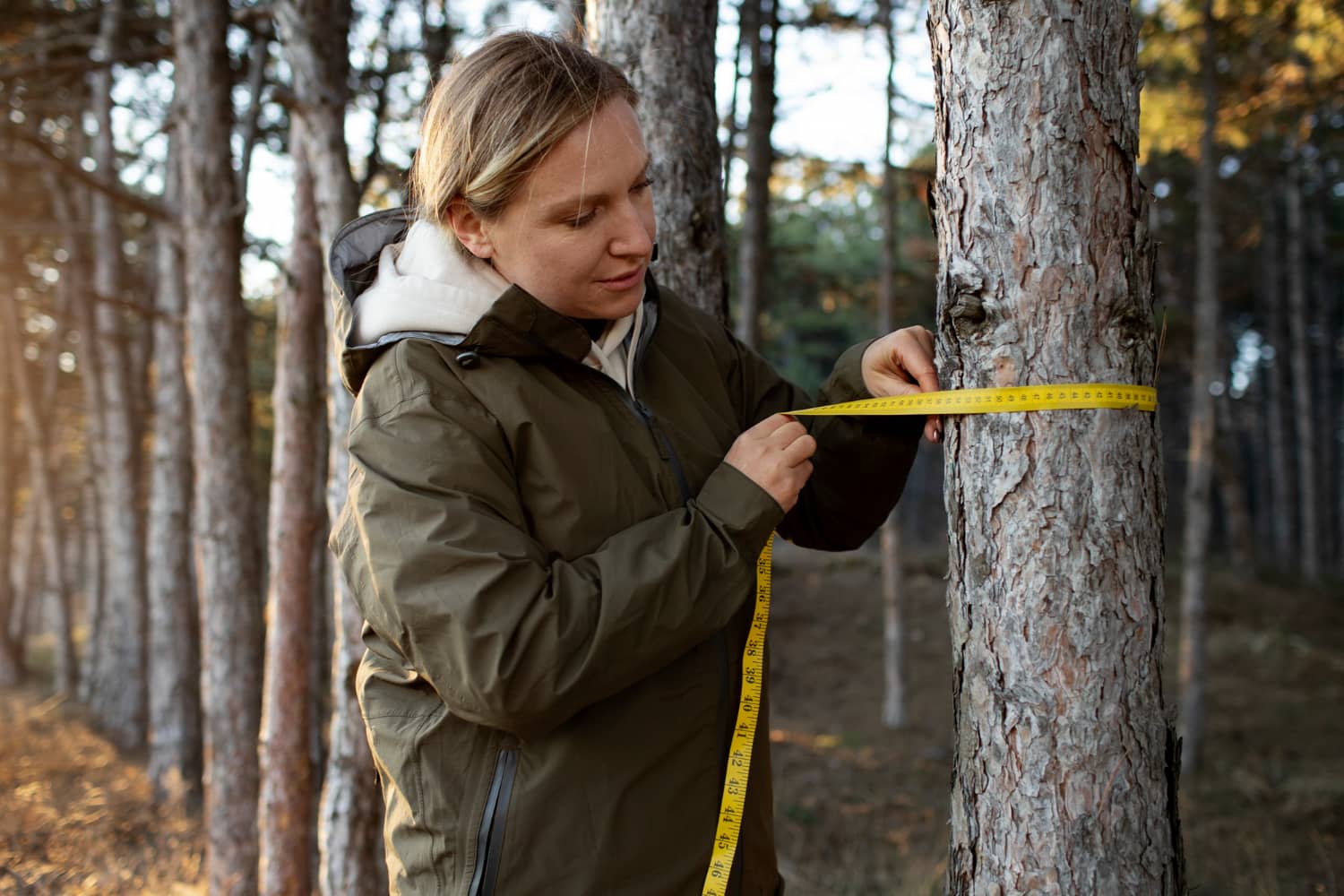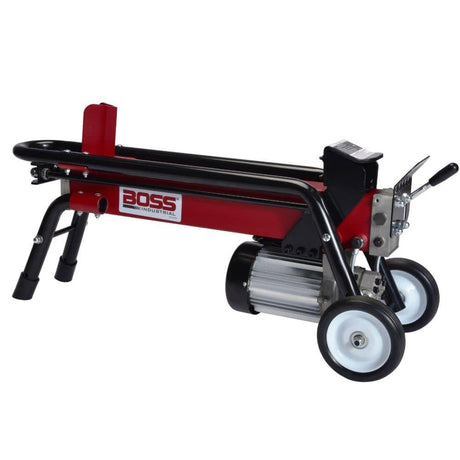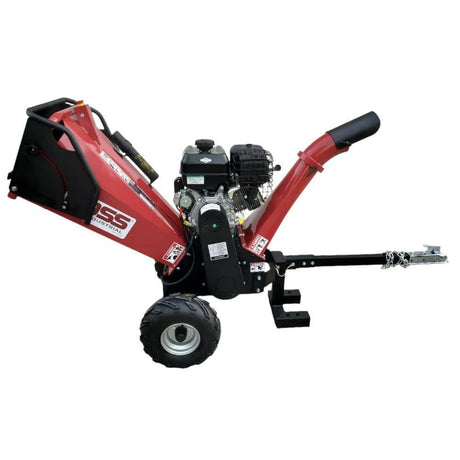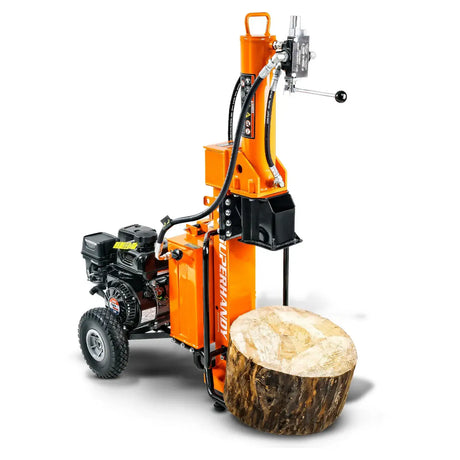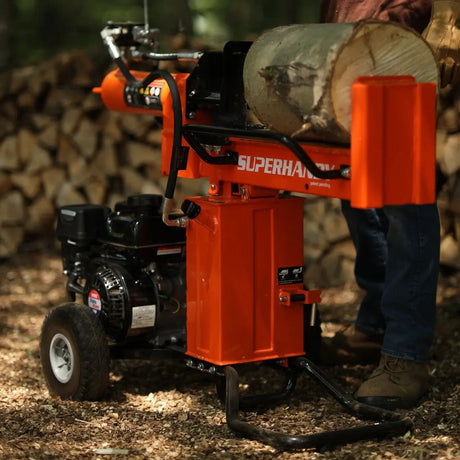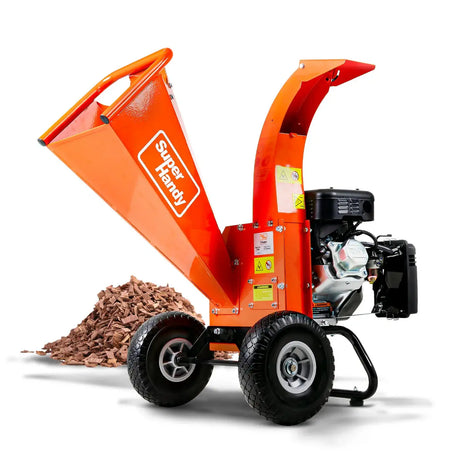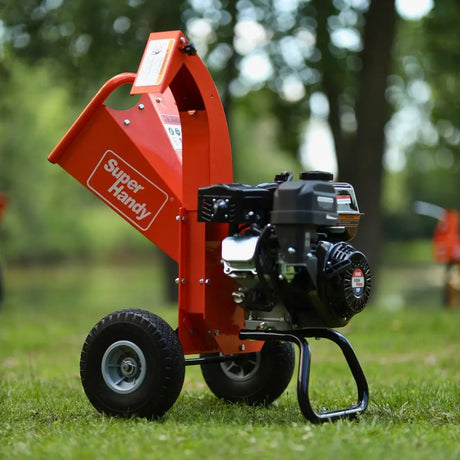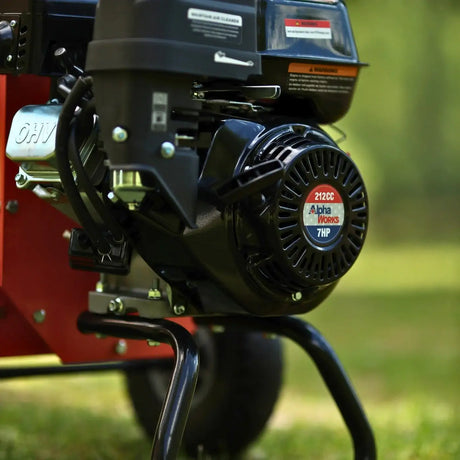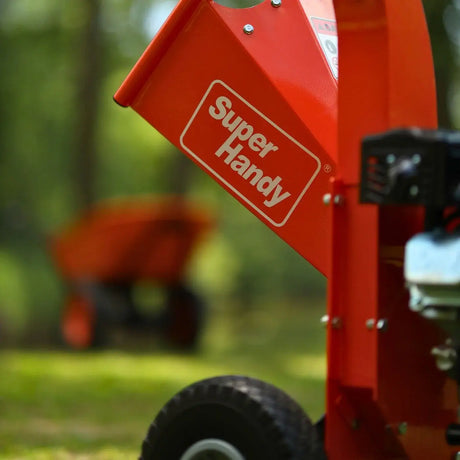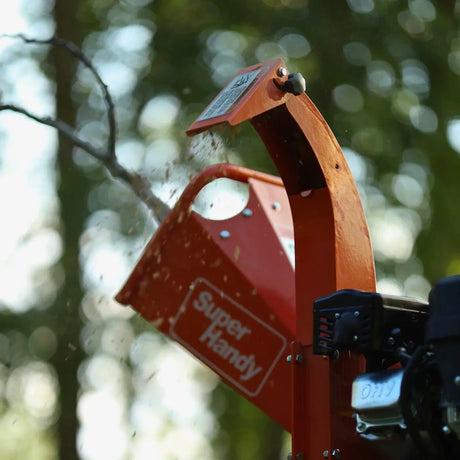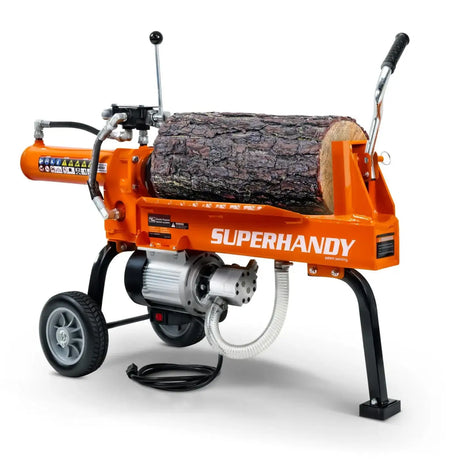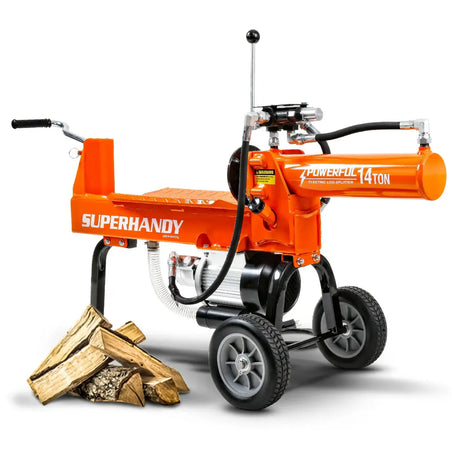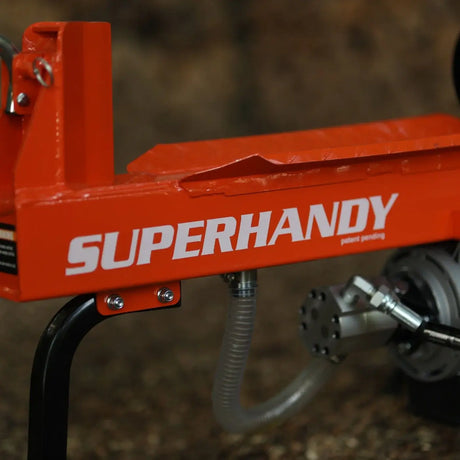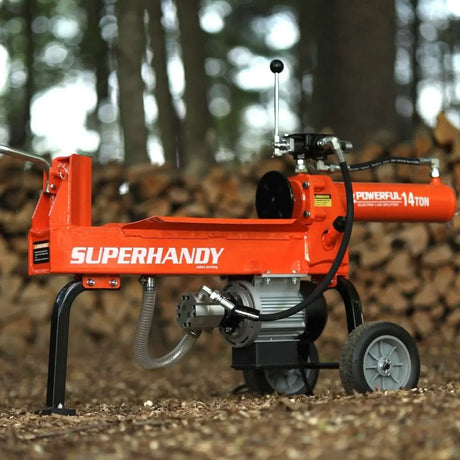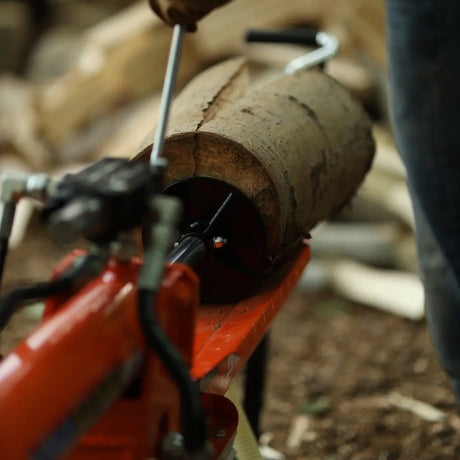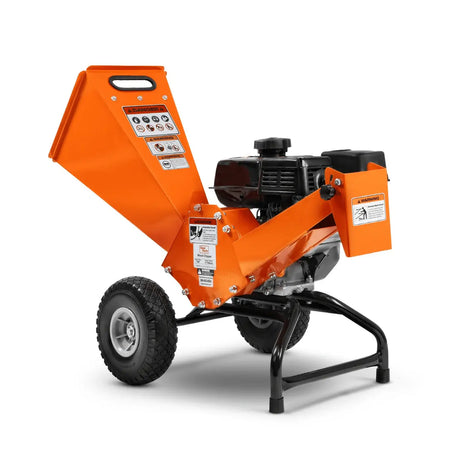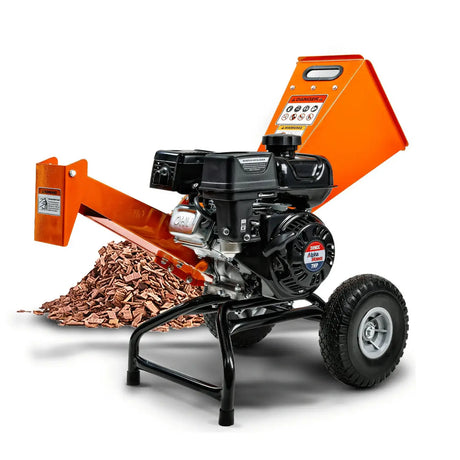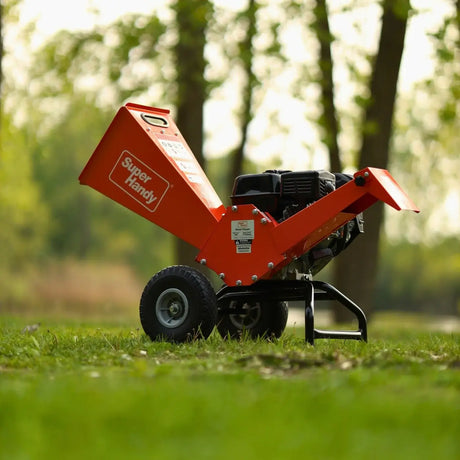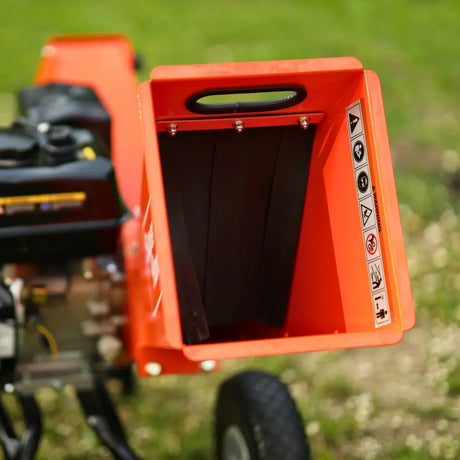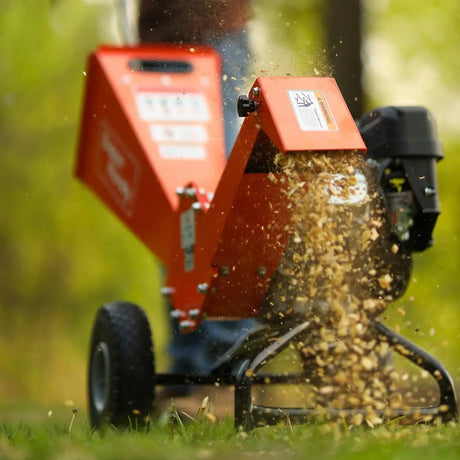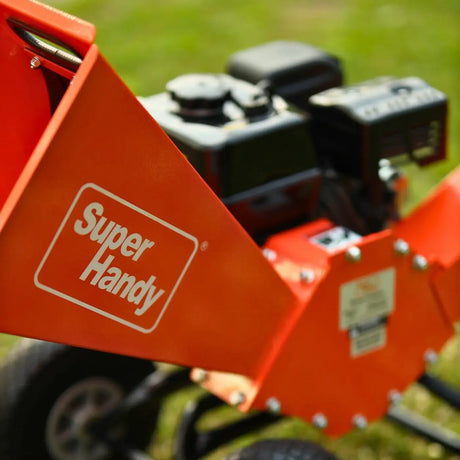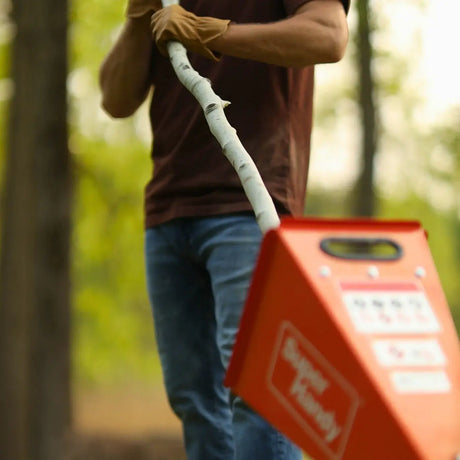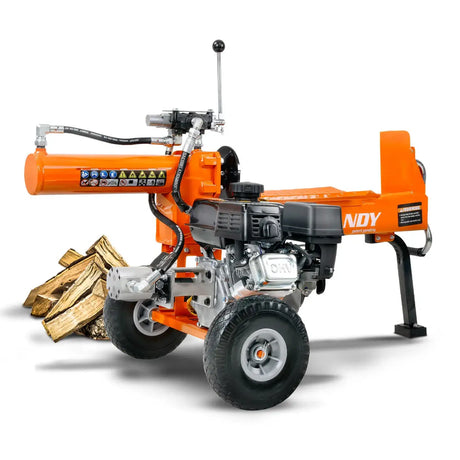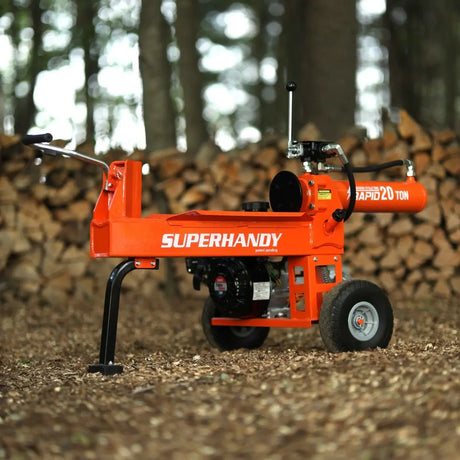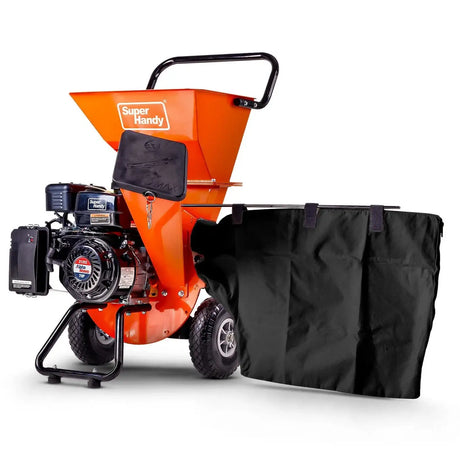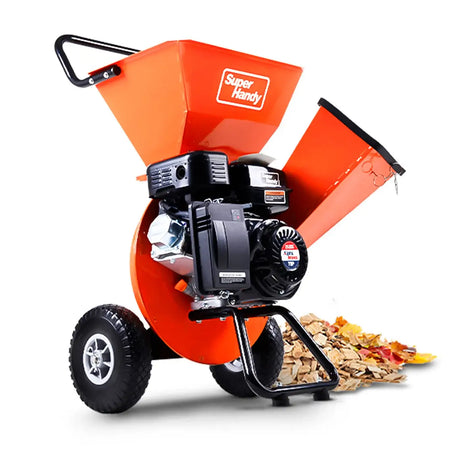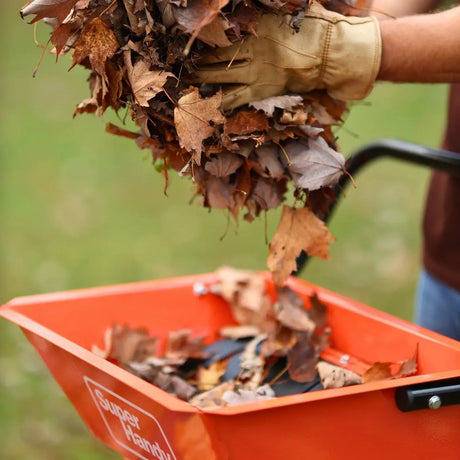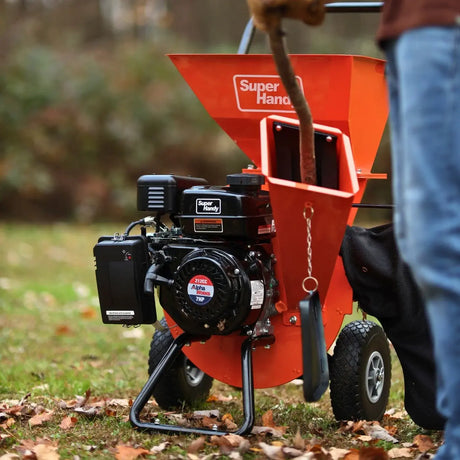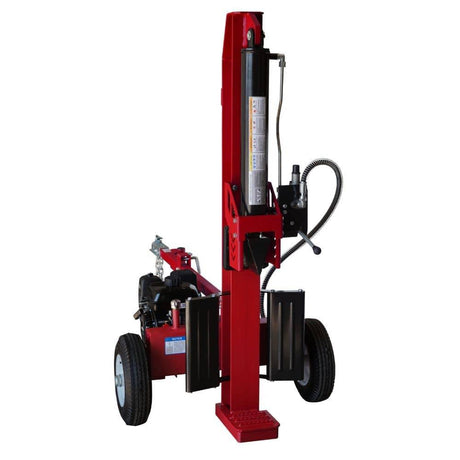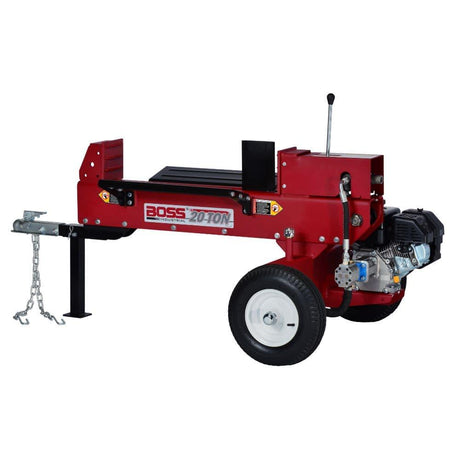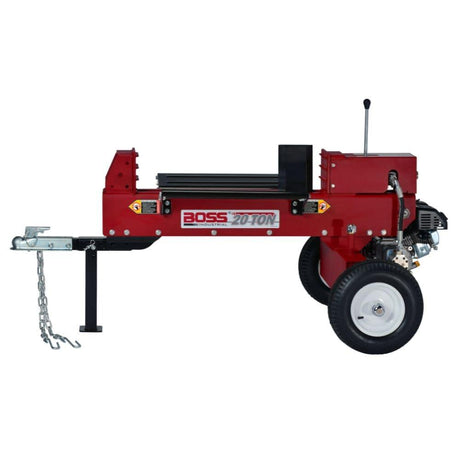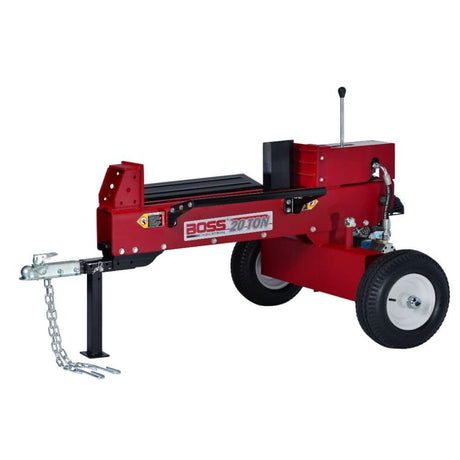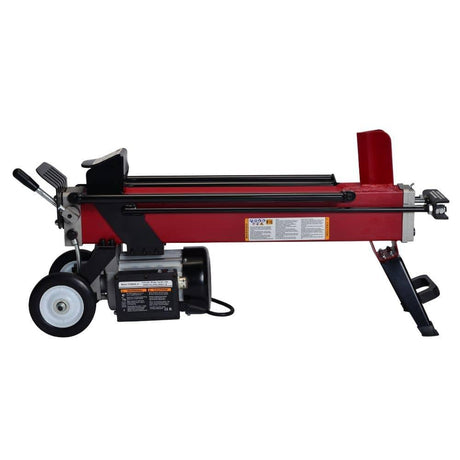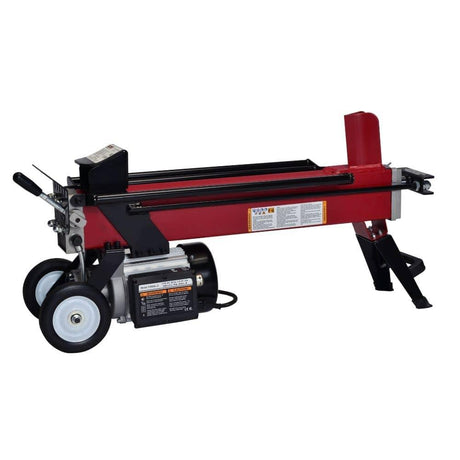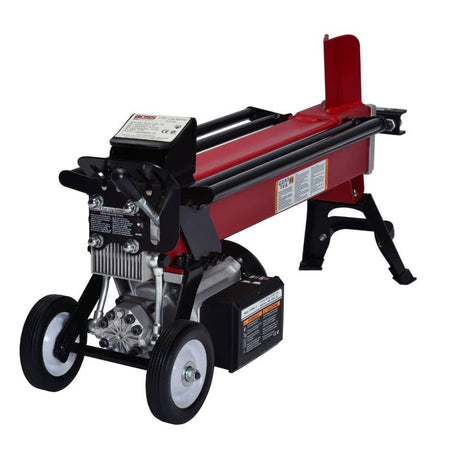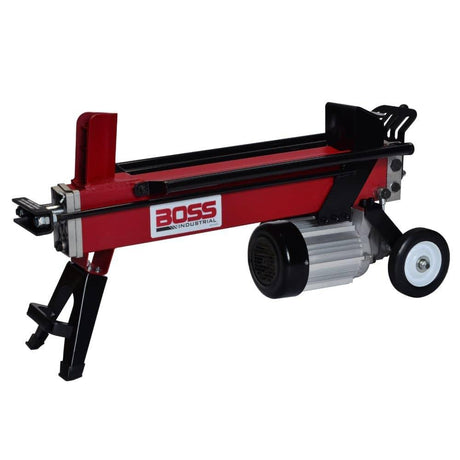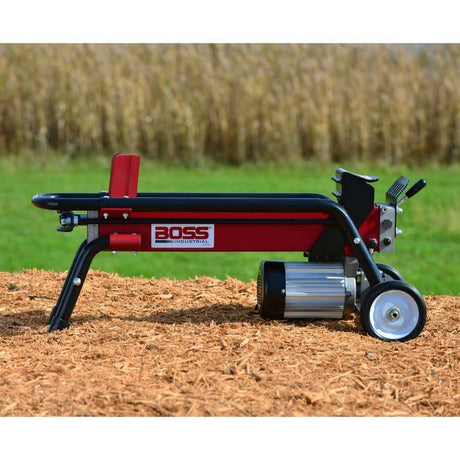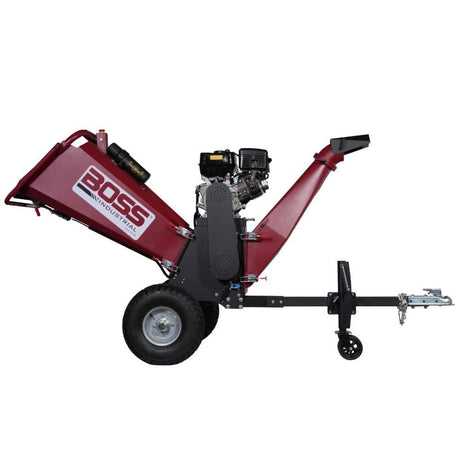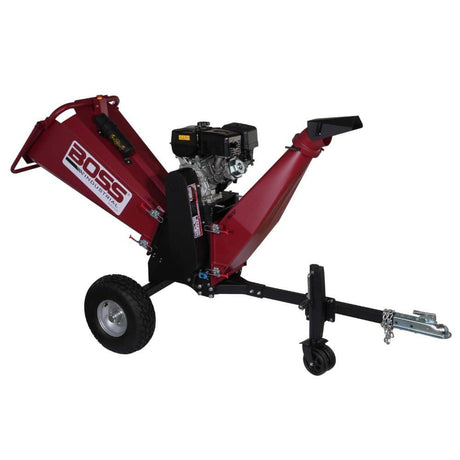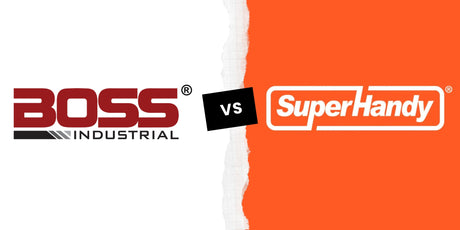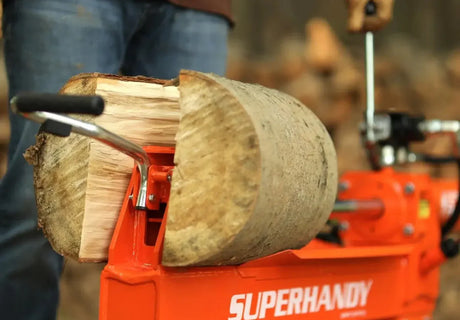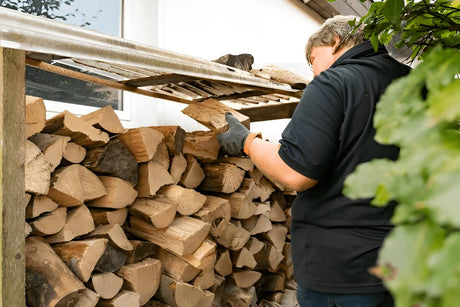Understanding Wood Chipper Size: What It Really Means
When we talk about wood chipper sizes, we're mostly referring to the branch diameter it can handle-called its chipping capacity. So if a chipper is rated for 3 inches, it means you can feed branches up to 3" in diameter without overloading the machine.
If you want to see how output varies by machine specs, check out our wood chipper output by size metrics to compare performance.
What Does "Chipper Size" Actually Refer To?
- Engine power - Higher horsepower powers through tough hardwood.
- Feed chute dimensions - Some 3" chippers have narrow chutes, making it tough to feed forked or leafy limbs.
- Overall footprint - Bigger machines can be hard to store or move, especially on uneven ground.
- Weight and portability - Homeowners often need a model they can tow or roll solo.
So when choosing a chipper, think beyond the number on the box. Consider what you're chipping, how often, and where.
Why Size Matters: Performance, Safety, and Efficiency
Using the wrong chipper size doesn't just slow you down-it can be dangerous.
-
Undersized chippers can clog, overheat, or kick back debris. Forcing thick limbs into small electric wood chippers is a common frustration.
-
Oversized machines can be overkill for light cleanup. They're heavier, louder, and more expensive to run and maintain. You may end up wasting fuel running a chipper at partial capacity, which adds additional fuel costs over time.
Think of it like this:
- Light cleanup (twigs, hedge trimmings): 1-2" chippers work fine.
- Storm debris or branches up to 3-4": use a mid-size gas chipper.
- Heavy-duty work (contractors, acreage): go 5"+, but ensure you've got the power and space to use it safely.
The right chipper saves time, keeps you safe, and gets the job done efficiently.
Check out all our tips for using a wood chipper safely
Wood Chipper Sizes Explained by Use Case
Best Chipper Size for Homeowners
If you're a homeowner dealing with yard cleanup, storms, or seasonal pruning, you likely don't need a massive machine. Most people deal with:
- Small branches from trimming trees and shrubs
- Fall cleanup with twigs and occasional thicker limbs
- Light to moderate debris after storms
Ideal chipper size: 1.5" to 3" capacity
- Electric models handle lighter loads (up to 1.5-2")
- Gas-powered units are better for thicker, fresh-cut wood (up to 3")
Pro tip: Choose a chipper rated slightly above your average branch size to avoid jams and overworking the motor. The right chipper improves both productivity and chip quality.
Shop Wood Chippers for Homeowners →

Best Chipper Size for Landscapers and Contractors
Landscapers need gear that keeps up with daily use and tough jobs:
- Mixed tree limbs, including forked or leafy branches
- Dense brush from properties
- Storm damage, windfall cleanup, or lot clearing
Drum chippers are effective for mixed limbs and brush thanks to their wide feed openings and efficient cutting action.
Ideal chipper size: 4" to 6" capacity
- Gas-powered, trailer-towable units with high horsepower
- Often feature self-feeding systems
Speed and durability are key. A 2-inch chipper for 5-inch work wastes time and frustrates clients. Larger chippers also offer contractor upgrades for extended use.
Look for:
- Wide feed chutes
- Easy blade access for maintenance
- Solid build with vibration control
Shop 3-Inch to 7-Inch Wood Chippers →

Chipper Sizes for Commercial and Agricultural Use
For those managing land or acreage:
- Fenceline clearing
- Orchard maintenance
- Firebreak prep or trail access
Ideal chipper size: 5" to 7"+ capacity
- High-torque engines handle tough, dry wood
- Durable enough for infrequent but intense jobs
Diesel engines are particularly suited due to their torque and compliance with emissions standards. They require DEF and have more electronic components compared to gas engines.
Pro tip: Choose models with adjustable hoppers and towing options for field flexibility. Closely positioned feed wheels near the drum help increase productivity when working with larger throat openings.
If you need to remove stumps before chipping, see our guide to deciding if a stump grinder is right for you.
Industrial Chipper Sizes: Drum Chippers You'll Never Need (Probably)
Most people don't need 8" to 12" industrial chippers. These are:
- Built for commercial tree removal, municipalities, and highway crews
- Expensive, heavy, and designed for nonstop use
- Often PTO-driven or trailer-mounted
Disc chippers efficiently handle large material, requiring less horsepower and fuel. Disc style chippers also throw chips at higher velocity using cupped throwers.
Unless you're running a full-time tree care company or municipal fleet, these are overkill. If you're not clearing whole trees every week-not only the truck full of debris-stick to the 2"-6" range.

How to Match Chipper Size to Branch Diameter
Typical Branch Sizes and the Chippers That Handle Them
Matching the right chipper to your typical branch size matters. Too small = jams. Too big = wasted money.
- 1" or less: Electric or small gas chippers (1-1.5" capacity)
- 1.5" to 3": Mid-range gas models (3" capacity) - sweet spot for most homeowners
- 3" to 5": More powerful gas chippers, possibly towable - good for landscapers and rural users
- 5" to 7"+: Heavy-duty equipment - drum chippers with larger throat openings excel at this level
Rule of thumb: Your chipper should be rated at least 0.5-1 inch above your largest expected branch. That's a good rule to reduce engine stress.
What Happens If You Overload a Chipper?
Going beyond limits isn't just inefficient-it's dangerous.
- Frequent clogs - waste time clearing the chute
- Blade damage - faster wear or chipping
- Engine strain - can stall and require cooldown
- Kickback - unsafe if the branch isn't pulled in cleanly
If your chipper groans mid-feed, stop and reassess. Overloading leads to less torque and more fuel consumption.
Underrated Detail: Feed Chute Size and Design
Cutting capacity is important-but chute design matters too.
- Narrow chutes make feeding forked limbs harder
- Short or steep chutes can force awkward feeding angles
- Self-feeding designs reduce fatigue and speed up work
Closely positioned feed wheels near the drum improve efficiency on larger, fibrous vegetation like palm fronds and other materials.
A customer once said, "It could handle 3-inch branches, but I couldn't get them into the chute without hacking off every fork."
Look beyond the spec sheet. Smart chute design makes the job easier and safer.

Other Factors That Impact Sizing Decisions
Gas vs Electric Models and Size Implications
Power source affects chipper size:
- Electric: lighter, quieter, best for small jobs; top out at ~1.5-2" capacity
- Gas: ideal for anything over 2"; more powerful and portable
Gas engines also have fewer electronic components than Tier 4 diesel engines, which require DEF and more electronic components for emissions compliance.
Want to learn more about the difference between engine types? We've created a comprehensive guide comparing gas and electric wood chippers.
Engine Power: HP/CC and Performance
Two chippers with the same capacity can perform very differently based on engine power:
- HP or CC tells you how much work the engine can do
- For 3" capacity, look for 6-7 HP or ~200cc
- For 4-6"+, go 10 HP and up, especially for hardwood
Drum style chippers are efficient with fibrous material, needing less horsepower and fuel due to their cutting mechanics.
Portability, Weight, and Ease of Use
Crucial if you're working solo:
- Under 100 lbs: easy to move, limited power
- 150-250 lbs: manageable, often come with tow bars
- 300+ lbs: typically require trailers or extra help
Ask:
- Will I move it over gravel or hills?
- Do I need to load it into a truck?
- Can I roll it out of the garage alone?
If it's hard to use, it won't get used-and that's wasted money and time maneuvering instead of chipping.
Budget and Storage Considerations
Size also comes down to space and money:
- Electric models: usually under $300, easy to store
- Gas models: start around $500, can exceed $2,000
- Larger units may not fit through gates or in sheds
Ask:
-
Will I use it regularly enough to justify the cost?
-
Could I rent a larger model a few times a year instead?
Wood Chipper Size Comparison Chart
| Chipper Size | Max Branch Diameter | Engine Type | Typical User | Best For |
|---|---|---|---|---|
| Small | Up to 1.5" | Electric or small gas | Homeowners (light use) | Twigs, hedge clippings, dry yard waste |
| Medium | 2" – 3" | Mid-size gas | Homeowners & DIYers | Small limbs, storm cleanup, seasonal pruning |
| Large | 4" – 5" | High-power gas (200cc+) | Landscapers, rural users | Thicker branches, mixed yard waste, moderate brush clearing |
| Heavy-Duty | 6" – 7"+ | Commercial-grade gas | Contractors, large properties | Heavy brush, orchard limbs, large volume cleanup |
| Industrial | 8" – 12"+ | PTO or trailer-mounted | Tree services, municipalities | Whole trees, full lot clearing, roadside maintenance |
Quick notes:
- Choose a chipper rated slightly above your average branch size.
- A 3" dry oak branch stresses your chipper more than a 3" pine.
- If chipping regularly, avoid entry-level models-they won't keep up.

Final Buying Tips: Choosing the Right Chipper Size for You
Start with the Largest Branch You Expect to Chip
Always plan for the largest branch you'll chip, not the average. If you're trimming trees or cleaning up storms, plan for 3"-4" limbs and size your chipper accordingly.
Think of it like sizing a trailer: buy for the heaviest haul-not only the truck's average load.
Don't Underestimate Your Volume of Yard Waste
Volume impacts performance.
If you have:
- A big yard with mature trees
- Regular storm debris
- Cleanup projects
A small chipper-even with the right diameter-might slow you down. Bigger volume = more power = more durability.
Look for Models with a Safety Margin
Avoid running your chipper at full capacity all the time. It strains the engine, dulls blades, and increases clogs.
- If your biggest branches are 2", get a 3" chipper
- If you expect 4" limbs occasionally, look for a 5" model
This margin gives you breathing room.
When in Doubt, Size Up (Within Reason)
Stuck between two models? Go with the larger-if you can manage its size, weight, and storage.
But don't overdo it. A 6" commercial chipper for occasional 3" limbs is likely too bulky.
Ask:
- Can I move it alone?
- Will it fit in my garage?
- Will I use this much power?
The right chipper fits your needs-not just your ambitions.


